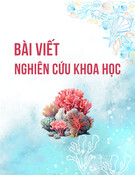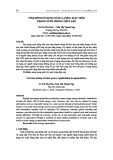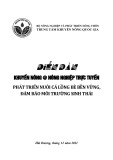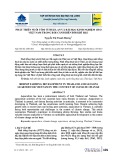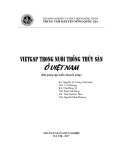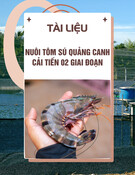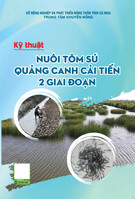
Vietnam Journal
of Agricultural
Sciences
ISSN 2588-1299
VJAS 2023; 6(2): 1787-1796
https://doi.org/10.31817/vjas.2023.6.2.04
https://vjas.vnua.edu.vn/
1787
Received: March 14, 2023
Accepted: June 21, 2023
Correspondence to
ntmai.ntts@vnua.edu.vn
ORCID
Nguyen Thi Mai
https://orcid.org/0000-0001-6754-
4385
Impacts of Dietary Supplementation of
Peptidoglycan Extracted from Lactobacillus
sp. on the Growth Performance and
Resistance to Streptococcus Agalactiae of
Nile Tilapia
Nguyen Thi Mai1*, Mai Van Tung1, Do Hoanh Quan2, Vu Thi
Thanh Huong3 & Nguyen Thu Hang4
1Faculty of Fisheries, Vietnam National University of Agriculture, Hanoi 131000, Vietnam
2Bio-floc Co., Ltd., Lien Hiep, Phuc Tho 153600, Hanoi, Vietnam
3Faculty of Aquaculture, Ha Long University, Quang Ninh 208220, Vietnam
4Pharmacology Department, Hanoi University of Pharmacy 111000, Hanoi, Vietnam;
Abstract
The current experiment aimed to determine the effects of
peptidoglycan, known as a prebiotic compound, on the growth, feed
efficiency, and disease resistance in Nile tilapia. Fish at an initial
body weight of 22.6 ± 0.3g were distributed into a 100 L-glass tank
system. Peptidoglycans extracted from Lactobacillus sp. were added
to commercial feed at ratios of 0, 5, and 10 g kg-1 diet corresponding
to the PG0, PG5, and PG10 treatments, respectively. Fish were then
fed at 4% their body weight for four weeks. After a 4-week trial, fish
were infected with Streptococcus agalactiae at 50% the lethal dose
(1.1×106 CFU mL-1), and monitored for 14 days. After 2 and 4 weeks
of the feeding trial (T2 and T4) and on the second day of the bacterial
challenge, fish blood samples were collected for hematological
analysis. The results indicated that the dietary supplementation of
peptidoglycan induced a positive effect on fish growth performance
and the highest value was observed in the PG5 treatment. The lowest
value of cumulative mortality was also observed in the PG5-fed fish
indicating that the dietary supplementation at 5 g kg-1 diet supported
the highest resistance to S. agalactiae. In conclusion, the beneficial
effects of dietary supplementation of peptidoglycan extracted from
Lactobacillus sp. were recorded on the growth performance and
disease resistance in Nile tilapia.
Keywords
Prebiotics, cumulative mortality, disease resistance, peptidoglycan,
Streptococcus agalactiae
Introduction
The immune system of fish, including both innate (non-specific)
and adaptive (specific) immunology, plays a very important role in





